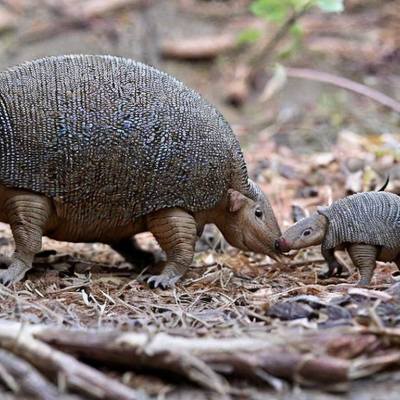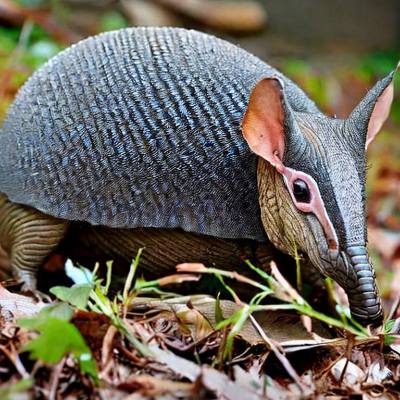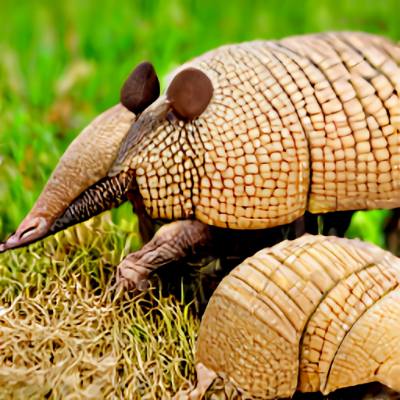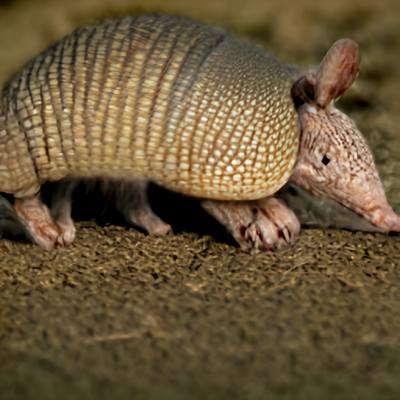Answer: Armadillos do not lay eggs. They as a substitute provide birth to stay young, that’s what most mammals do. We’re about to take a better look at the fascinating technique that is going on between theory and the arrival of their lovely puppies.
For a few years, there was a commonplace false impression that armadillos lay eggs. However, the truth is that armadillos are mammals and deliver delivery to live young. The confusion likely stems from their precise appearance and behavior. Armadillos have a difficult, bony shell masking their bodies, much like that of a reptile. Additionally, they dig deep burrows within the ground, which might lead some to agree with that they lay eggs. In this post, we are able to discover the captivating world of armadillos and their reproductive behavior, and we’ll offer clinical proof that debunks the parable of armadillos laying eggs. So, if you’ve ever questioned whether or not armadillos absolutely lay eggs, study on to find out the fact approximately these abnormal creatures!
The armadillo, with its armored exterior and peculiar look, has lengthy captivated the curiosity of both nature enthusiasts and casual observers alike. Hailing from the circle of relatives Dasypodidae, those unique creatures are native to the Americas, with diverse species inhabiting exceptional areas. From the 9-banded armadillo found in North and Central America to the large armadillo residing in South America, these charming mammals have an undeniable appeal that sparks intrigue.
One of the most widespread myths surrounding armadillos is the perception that they lay eggs. This false impression has endured for years, leading many to envision these armored creatures as reptiles in preference to mammals. However, it is time to dispel this myth and delve into the fact behind the armadillo’s reproductive method.
While armadillos can also share a few physical similarities with reptiles, inclusive of their scaly skin and ability to twist right into a ball for safety, they’re sincerely warm-blooded mammals. These excellent creatures provide beginning to stay younger, similar to different mammals, rather than laying eggs as reptiles do. Understanding the real nature of armadillo reproduction is essential in unraveling the mysteries surrounding these enigmatic creatures.
What is Armadillos?
Armadillos are truely interesting animals. Animals that appear to be armored knights from the Middle Ages have hard, hard plates that lead them to stand out. A lot of humans still have this query, although: Do armadillos lay eggs? No be counted how exceptional they look.
Before we communicate approximately this armadillo puzzle, let’s talk about some primary information about these exciting mammals. Armadillos are not animals, even though their hardened pores and skin makes it look like they’re. It’s genuine that they’re mammals, and the way they reproduce is in line with that. Dogs, cats, and people all give start to stay young. Affectionately referred to as “puppies,” these lovable dogs add another layer of appeal to these unusual animals.
Now, with our armadillo introduction out of the manner, allow’s tackle the burning question.
Do Armadillos Lay Eggs?
The short answer is that armadillos don’t lay eggs. They rather supply beginning to live young, which is what most mammals do. We’re approximately to take a better observe the interesting manner that is going on among theory and the advent in their cute puppies.
The origins of the armadillo egg-laying fable
The fable that armadillos lay eggs has been a subject of curiosity and confusion for decades. It is important to understand the origins of this delusion to split truth from fiction in terms of those captivating creatures.
The confusion might also have arisen due to the unique reproductive behavior of armadillos. While maximum mammals provide start to live younger, armadillos are one of the few exceptions. They are known for his or her ability to put off implantation of the fertilized egg within the womb, a method known as not on time implantation or embryonic diapause.
During this period, the fertilized egg stays dormant in the mother’s uterus till conditions are surest for being pregnant to keep. This can deliver the impact that armadillos lay eggs, because the gestation period may additionally appear longer than anticipated for a mammal.
In addition to not on time implantation, armadillos also have a fantastically short gestation duration compared to other mammals. Depending at the species, the time from fertilization to birth can range from a mere 60 to a hundred and twenty days. This speedy improvement in addition provides to the misconception that armadillos lay eggs.
Furthermore, the unique appearance of armadillos, with their hard, bony plates protecting their bodies, may additionally make contributions to the notion that they’re associated with reptiles. However, armadillos are honestly mammals, belonging to the order Cingulata.
How many babies do armadillos commonly have?
Female armadillos nearly usually provide birth to 4 identical quadruplets during this time of year for breeding, and right here’s the cool element: all of them come from the equal egg! Scientists and natural world enthusiasts alike are still now not certain a way to give an explanation for this occasion. How can four people, who’re all precisely the identical, come from a unmarried egg? The solution continues to be now not clear.

How lengthy do armadillos live?
Nine-banded armadillos generally live among 7 and twenty years within the wild. Many matters affect this variety, together with the quantity of meals available, the presence of enemies, and the kingdom of the surroundings.
Armadillos that live in zoos tend to live longer than those that live inside the wild. They can stay for greater than twenty years and experience residing in a controlled placing. The massive difference in how long those animals live indicates how their lifestyles situations have an effect on them.
Also Read : Can Animals Have Down Syndrome?
Reproduction of Armadillo

Armadillos do not reproduce inside the equal way that other mammals do. While most mammals most effective have one child at a time, armadillos have a unique manner of reproducing. They are the best mammals that are acknowledged to regularly have a couple of toddler from a single egg. That is a totally ordinary way to breed!
Due to this oddity, a mom armadillo can deliver delivery to a group of domestic dogs, all of which come from the identical egg. Coming up with toddlers is lots like winning the lottery, and armadillos are superb at it.
The Time of Gestation
Like maximum exciting things in nature, there is extra to this story than meets the attention. Armadillos undergo a reproductive time, much like many different mammals, and do not simply all at once make doggies. From thought to start, this term normally lasts among three and 5 months.
Think about the mother armadillo maintaining her growing domestic dogs inside her for any such long term, taking care of them until they’re ready to exit into the sector. It’s an terrific natural occasion that suggests how tough and bendy these included mammals are.
The Birth of Fully-Formed Pups

When the time comes, armadillo mothers don’t lay eggs that want to be hatching. Instead, they’ve completely made puppies through the birthing technique. When the tiny armadillo doggies pop out from their mom’s defensive hug, they’re prepared to discover their global. Think of it as a bit miracle of lifestyles.
This trade from laying eggs is crucial. Some animals lay eggs and then leave their young to hatch on their own, however armadillo mothers are concerned in their puppies’ early lives. They take care of and feed their young, giving them the pleasant start feasible of their included global.
Armadillo Quirks: Surprising Things in Nature
Animals like armadillos are a high-quality instance of how nature can wonder us in ordinary methods. Even though they don’t lay eggs like many different mammals, they display us how splendid it’s far that distinctive species may have exclusive infants. The duck-billed platypus and the echidna are two other mammals which can be known to put eggs. Armadillos are the best ones that do this in a unique way.
The Link Between the Platypus and the Echidna

When it involves breeding, the duck-billed platypus and the echidna, that are each monotremes, are the odd ones out among mammals. Most mammals deliver birth to live young, however these animals lay eggs.
As we study extra approximately armadillos and how they have infants, it’s interesting to see how exclusive mammals are. From monotremes that lay eggs to armadillos’ particular manner of having more than one domestic dogs, nature is usually showing us how creative it is.
The Four Identical Young of Nine-Banded Armadillos
Before we end speaking about how armadillos reproduce, let’s take a second to speak approximately something very astounding that the nine-banded armadillo does. There are many styles of armadillos, but the nine-banded armadillo stands out. These fantastic animals nearly constantly deliver start to four same quadruplets, and what’s even more superb is that all 4 infants develop from the same egg.
Imagine 4 tiny armored explorers coming out of a unmarried place to begin. Each one is an precise copy of the others. These things do not happen very often in animals, and that they show how complicated nature is.
Other interesting information approximately armadillos
Armadillos are charming creatures that have captured the interest of many. While we can be familiar with their unique armor-like shells and their potential to roll into a ball for safety, there are numerous different exciting statistics about armadillos which can be well worth exploring.
Firstly, contrary to popular notion, armadillos do now not lay eggs. They are mammals and provide start to live young, much like people and different mammals. The misconception approximately armadillos laying eggs probably stems from their reptilian-like look and the belief that each one animals with scales have to lay eggs. However, armadillos are heat-blooded mammals that provide birth to absolutely fashioned younger.
Another intriguing truth about armadillos is their wonderful adaptability. They have a wide variety of habitats, from grasslands to forests, and are native to the Americas. Armadillos have also been brought to different elements of the world, consisting of Europe, due to their potential to adapt to new environments. This adaptability is obvious in their weight-reduction plan as nicely, as armadillos are opportunistic feeders, consuming a variety of meals together with insects, small vertebrates, or even culmination and greens.
Armadillos additionally own specific physiological characteristics. For example, their shells are made of bony plates protected in tough, leathery skin. These plates offer amazing safety in opposition to predators, however additionally they restriction the armadillo’s flexibility. As a end result, armadillos have advanced the ability to inflate their stomachs with air, allowing them to float and go bodies of water.
Furthermore, armadillos are regarded for his or her outstanding digging abilties. They have strong claws on their the front feet that allow them to dig burrows for refuge and forage for food. These burrows may be quite extensive, with multiple chambers and entrances. Some armadillo species even create complicated tunnel systems underground, presenting protection from predators and extreme weather conditions.
Debunking commonplace misconceptions about armadillos
Armadillos are captivating creatures which have often been shrouded in mystery and misconceptions. One of the maximum not unusual misconceptions approximately armadillos is that they lay eggs. However, this is some distance from the truth.
Armadillos are mammals, just like puppies, cats, and human beings. As mammals, they provide start to live young ones as opposed to laying eggs. Armadillo women have a completely unique reproductive device wherein they normally give beginning to identical quadruplets. This phenomenon, known as polyembryony, is a unprecedented prevalence among mammals.
The misconception that armadillos lay eggs probable stems from their particular look and behavior. Their difficult, bony plates masking their our bodies resemble the ones of reptiles, which may additionally lead some to consider that they’re associated with reptiles and consequently lay eggs. Additionally, armadillos are recognized for his or her burrowing conduct, which may further contribute to the false impression, as many reptiles do lay their eggs in burrows.
Conclusion
We now know for sure that armadillos do lay eggs. Armadillos are mammals, and they provide beginning to stay young like maximum mammals. But they’re distinct from other animals because they can have more than one pup from a single fertilized egg. The duck-billed platypus and echidna may additionally seize our interest due to the manner they lay eggs, however armadillos have their very own interesting tale to inform. When you spot such a covered animals once more, you can percentage your expertise that, no matter what they appear to be, armadillos do not lay eggs and be amazed at how they reproduce.
It’s clean that nature can wonder us with even the most ordinary animals as we come to the end of our check out the world of armadillos. There are a whole lot of secrets inside the animal world, and each species has its very own story to inform. Armadillos are an excellent instance of this. You can find solutions on your questions about the natural world in loads of abnormal places, like the shell of an armadillo or the bag of an echidna.
